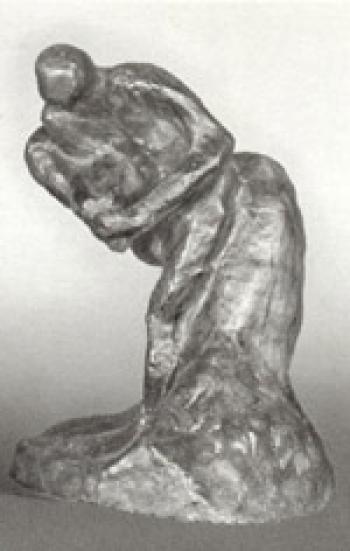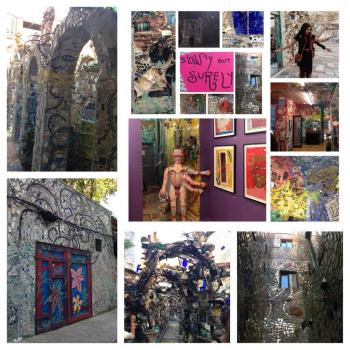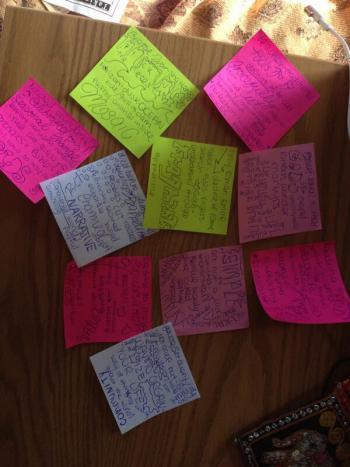Serendip is an independent site partnering with faculty at multiple colleges and universities around the world. Happy exploring!
clarsen's blog

Lens
Last weeks paper I focused on Leah and Michel's biracial relationship. This week I would like to broaden my lens and incorporate other characters that share biracial and bicultural friendships and relationships such as Frank and Leah, Frank and Natalie, and Leah and Natalie. I mainly wrote about how Leah and Michel's race pushes them apart but I think it would be interesting to add in other negative and positive factors in their relationship.

The Struggle Behind a Biracial/Bicultural Marriage
A few months ago, a new commercial from Cheerios surfaced which surprisingly had a terrible response from many viewers. The commercial showed a biracial girl asking her white mother if “cheerios really were good for your heart” who later goes on to pour them over her black father. The cynical comments came from both white and black viewers who were disgusted by the thought of a biracial couple. One of Zadie Smith’s lead couples in her novel NW is also biracial and faces similar negative reactions. The overwhelmingly negative feedback from both the commercial and the characters in NW led me to question how accepted it was to be in a biracial and bicultural relationship along with the problems and barriers that stand in between.

NW
The romantic relationships in Zadie Smith’s NW sparked my interest. The novel focuses mainly on ones between Felix and Annie, Leah and Michel, and Natalie and Frank. Each is very complicated and filled with unique problems that revolve around common problems such as money and children. These characters make impulsive mistakes, judgments, and decisions that only hurt them in the long run. What confused me most was definitely Natalie’s listings and Leah’s relationship with Michel. Many times Leah speaks down to Michel and seems embarrassed by his poor English especially when surrounded by others. Their relationship is one of the most interesting ones as they are so different, not just based on race and culture. Their interests are completely divergent and neither are honest with one another.

Evaluation
When choosing my top three choices for my ESEM this summer, I remember being stuck between “Arguing with Songs” and “Play in the City” yet I am so grateful that I was placed in this class. I expected Play in the City to be much more theatre based but I have found that interpretations and observations are much more the backbone. Like most college classes, students are asked to contribute their perspectives and different points of view. We dig up our past experiences, childhood memories, thoughts and notes we’ve shared on trips, and what we’ve seen in and on our way to Philadelphia.
When we first began, we visited our destinations in groups, yet as the class unfolded we began to break into groups to self organize our trip and visit. I think this worked to our advantage as it gave us the ability to individually experience something different and become more independent. I especially enjoyed the assignment a couple of weeks back where we were given the opportunity to personally choose and present a specific place to visit. This research aided our exploration of the city and hearing each person present their research made me aware of how much the city of Philadelphia has to offer. It also allowed me to reach to students I hadn’t previously spoken to.

Old City
This summer I participated in “Tri-Co”, a program where Swarthmore, Haverford, and Bryn Mawr students discuss social justice, equity, and diversity. During one caucus we touched on the Norristown High Speed Line and how Bi-Co students often refer to it as “sketchy”. What was it about the train that made students afraid or uncomfortable and what exactly did they mean by “sketchy”? The upperclassman agreed that it attracted more minorities and working class people rather than the business men and women that typically use the R5. When I boarded the train on Saturday, I found it to be like any typical New York City train cart. There were a larger range of people on board which included large families, construction workers, and students.
After we transferred to the Market-Frankford line, however, I could see how the crowd might make students uncomfortable. There were several homeless people on board that tried to strike up conversations with the people around them. One man in front of me continually yelled at every passenger that carried a bottled drink, turned around in his seat and stared my group and I down, and muttered profanities under his breath. Being raised in New York definitely taught me to put my guard up and expect the worse when in these situations. Although the homeless people in New York aren’t typically as aggressive, I’m used to receiving attention from them.

City Hall!
- http://abclocal.go.com/wpvi/story?section=news/local&id=9268677
- http://en.wikipedia.org/wiki/Philadelphia_City_Hall
- http://www.phila.gov/virtualch//index.html
- http://www.phila.gov/virtualch//body_pages/visitorinfo.html
- http://www.phila.gov/virtualch//body_pages/room_directory.html
- http://www.phila.gov/virtualch//body_pages/history.html


South Street
After making many trips into Philadelphia the past few weeks I can really see how it’s considered a “City of Neighborhoods”. This concept really struck me on Friday, however, when I visited Philly’s Italian Market, South Street, and the many sections in between. I prefer these areas to Center City; they seem more honest, raw, and interesting to me while reminding me an awful lot of downtown New York. The first time I walked through South Street was last Friday when my group and I visited Magic Gardens. I saw how influenced the blocks were by the “younger generations” through art, music, and style.

Henri Matisse's Sculptures
Henri Matisse has long been one of my favorite painters yet up until a few days ago while researching him, I had never seen one of his sculptures. Although he is labeled as a one of the most important painters in Fauvism, he was also a draughtsman, printmaker, and sculptor. Matisse sculpted his figures to express stress and pain and they were certainly darker than his paintings. He exaggerated the figure’s contours in order to show their struggle. Much of the figures are twisted and in strange positions. 




